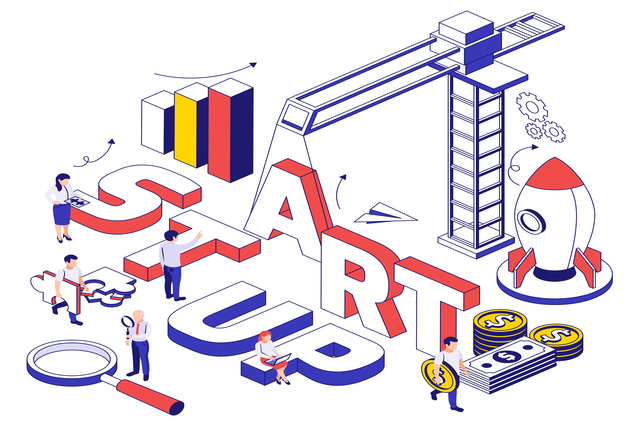
Even the most successful corporations didn’t get to where they are now instantly. It took multiple revisions, feedback, and growth to realize a final full-fledged product. The secret to their success is starting low and slow – through a strategic Minimum Viable Product (MVP) approach. It can come as a boon for startups too. An MVP with its core features helps startups save time, money, and resources. These are some of the reasons businesses need MVP before starting custom software development.
According to CB Insights, 8% of the time, a poor product is responsible for the failure of a startup. A promising idea could have become huge if only it was tested and nurtured according to market needs and other attributes. This is where an MVP proves pivotal; it allows room for errors while providing enough agility to make changes, validate, and develop an app that delivers in sync with expectations.
What is an MVP app?
A Minimum Viable Product (MVP) app is a beta app or prototype with all the essential features but lacks cosmetic functionalities. The principal or core features are built into the app for a demonstration and post feedback; the app comes out per your vision. An early version of the app tests feasibility and facilitates further modifications if needed.
MVP works like a Proof of Concept. It carries fundamental functionalities to test the same with a target audience and incorporate changes per their response. The build, measure, and change strategy in MVP App development service allows time efficiency and savings. The MVP process identifies issues, validates viability, and suggests an overall direction to improve and build the “full scope” app.

Why MVP is important for Startups?
Ability to Test and Iterate Post Feedback:
Test the app, gather feedback, and make changes. A full-blown app that doesn’t align with the vision can be hard to redevelop. Establish if the solution syncs with the expectations; before going the distance. If any revisions come up, it won’t blow your bank and waste considerable time and effort. See it like a pilot project that serves as a low-risk test. All the extensive changes can be integrated once the beta version is cleared.
Start Small and Scale later:
Starting small with a low-cost version of the app is a practical move. A scaled-up final version may not sit well. At that stage, after having invested a great deal, making colossal changes drain time, effort, and dollars. Get the approval and proceed on the suggested path without going over budget. Plus, the validation stage helps to pivot and level up with extras capabilities and rework any flaws to arrive at a more refined version of the app.
Attract Investors:
Startup apps often work on shoe-string budgets. An MVP development approach allows startups to make the most of the minimal budget and build an app in its simplest form for better backing and funding. The increased cash flow will help to amplify the app that was otherwise curtailed by the startup’s capital. Startups have ideas, and investors have the wealth – present a promising mock, win their approval, and work toward the ideal app.
Reduce Risks:
There is a high degree of risk in developing a complete app ready for launch. The level of uncertainty that prevails makes it hard to ascertain what features will win the audience and what components will get the boot. Startups can stick to a basic version and reduce the risk of significant financial losses from a failed app release. MVP is a sure-shot way to replace vagueness with certainty to minimize risk and lower costs.
Save Time and Effort:
If the final app doesn’t appease your audience, the level of iterations needed will involve more time and effort. It’s best to stick to the central features and leave the rest to a later stage, post collecting qualitative feedback. Once established, you’ll know how to approach the next leg of app development, and that too without any indecisiveness. Plus, an MVP contains the bare minimum features, requiring less time to develop and release the product for feedback.
Minimize costs and save money:
A sophisticated app that nears completion involves complex coding, higher working hours, and more investment. Making even minuscule changes in a fully-featured app is time-consuming and costly. This can become a waste of investment since you already pumped a lot of money and maybe maxed out your capital. Better to aim for an MVP and take an informed approach with more clarity and data before developing an effective final app.
7 Apps that Started as an MVP

1. Facebook:
Facebook started in the dorm room of Mark Zuckerberg in 2004 and was intended only for the students at Harvard. The website witnessed a tremendous spike in traffic and sign-ups from other universities. The avalanche of sign-ups is all that Mark ever needed to invest and recruit more members to expand and grow the social media giant. What started as a college-based and heavily limited MVP soon metamorphosed into Facebook and served as the foundation for Meta.
2. Airbnb:
Before Airbnb blossomed into what it is today, it was a website of a loft apartment of the founder’s Brian Chesky and Joe Gebbia. The founders had a hard time paying rent. They developed the site with the sole purpose of advertising their flat for short-term rental and testing out their idea with the attendees of a design conference in San Francisco. The website was a massive hit plus, they got the validation they wanted to open Airbnb as a hospitality platform for apartments, houses, and more.
3. Uber:
Uber relied on the “Build-Measure-Learn” cycle to develop a fundamental product. Leveraging the best practices of MVP app development, Uber released a minimal version to gauge the sentiments before giving into nice-to-have features. Starting as “Uber Cabs” on iPhone in San Francisco, it helped connect people with cabs and enabled easy credit card payments. Once the prototype received positive feedback, they went full scope with more investment in driver tracking, ratings, app wallet, and other features.
4. Dropbox:
Dropbox founders Drew Houston and Arash Ferdowsi used a video to solidify their idea. Instead of giving in and developing an MVP, they went ahead with a demonstrative video. The video captured their vision and conceptualized the features they intended. The video served as an MVP. They put the video out and received countless sign-ups for the best version overnight, indicating a strong interest in the cloud storage app and getting the validation they sought.
5. Spotify:
Spotify is another great success story that started with an MVP that contained the essential streaming and listing features. At the time, Spotify didn’t have the capabilities to share and create custom genre playlists. The founders wanted a product that showcased the possibilities of streaming music online without needing to download anything. This required an exemplary interface, the least latency, and a flawless user experience. All of which were made available in the early version.
6. Twitter:
Twitter, initially known as “twttr” started as an SMS-based messaging and micro-blogging platform meant for employees in Odeo. The full version didn’t release until July 2006. Seeing a promising future, Jack Dorsey and crew formed Obvious Corporation and brought Odeo, which owned Twitter. The platform was presented at the South by Southwest Interactive conference, and the immense response that followed convinced Dorsey to go big.
7. Etsy:
Etsy focused on creating a marketplace for a niche segment of craftsmen. The founder, Robert Kalin, and his friends ran a forum of craftsmen. The forum gave them enough insights into the struggle of selling handmade products. Even Robert struggled to sell his wooden computer creation. They decided to develop a unique platform allowing seamless trade of handmade craft products. He built an MVP, onboarded sellers, and in a matter of weeks, received countless sign-ups for its simplicity and low fees.
MVP app development in 2023
In 2023, Startups don’t want their ideas crashing because they failed to do due diligence in the initial stages and wound up developing an app that didn’t meet market sentiments. An MVP helps them avoid the hassles of the additional redevelopment effort. Startups must ensure their app is MVP tested before taking it live.
No complete and fully functional version from the start; research the essential features and only include those in the preliminary app. Leave the beautifying features to later stages – once you know your app has the potential to make it big. An MVP seeks validation; once you have authenticated your early vision, you’ll be able to zoom into full development with utmost confidence.
Wrapping Up
No app starts big, it takes continuous optimization and market analysis to build a high-performing app. To get you there, you need an MVP. An MVP wraps your idea with minimum features to secure investment, time, and effort and make the MVP software development journey more seamless. If you are in the middle of brainstorming an app and want help with the MVP, reach out to ISHIR. Our developers build the best app from the ground up for all industry verticals, in sync with your vision, on time, and within budget.
The post MVP App Development: The Secret Essence of 7 Successful Apps that Grew from an MVP appeared first on ISHIR | Software Development India.
*** This is a Security Bloggers Network syndicated blog from ISHIR | Software Development India authored by ISHIR | Software Development India. Read the original post at: https://www.ishir.com/blog/63024/mvp-app-development-the-secret-essence-of-7-successful-apps-that-grew-from-an-mvp.htm